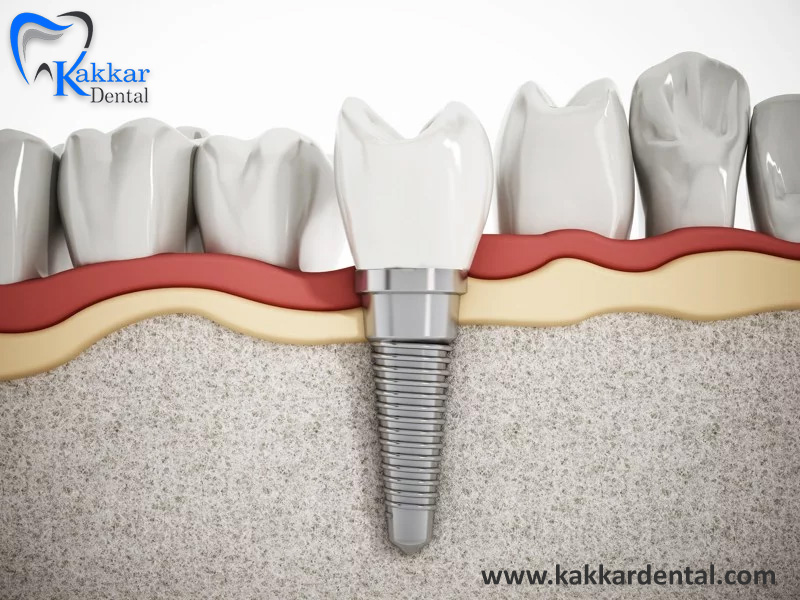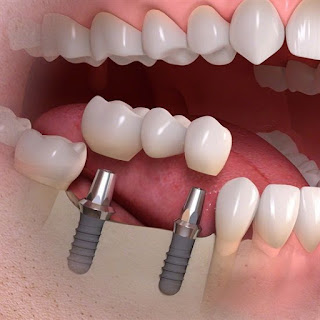The dental implant, in addition to feeling like a natural tooth, stands out for its safety and firmness. Dental implants allow us to recover the masticatory function and the aesthetics of lost teeth, it will improve our image and in turn strengthen self-esteem.
The dental implant in Ashok Vihar is the best solution to replace missing teeth, but what should we know if we are going to get dental implants?
WHAT IS THE DENTAL IMPLANT?
A dental implant is a titanium element that is inserted into the jaw bone, under the gum, replacing the root of the tooth. Subsequently, a custom-made crown will be placed on this titanium element that has the appearance and function of a natural tooth.
WHAT IS IMPLANT SURGERY?
Dental implant surgery is a minor outpatient surgery procedure, that is, a light intervention. This is largely due to the use of anesthesia.
The best dentist in Ashok Vihar uses local anesthesia in this type of surgery which eliminates all pain during the intervention.
Surgery consists of making an incision in the gum to reach the bone in the area to be implanted. Then, with a surgical motor, the bone perforation is prepared, to later insert the titanium screw to replace the lost tooth.
Finally, the gum of the operated area is repositioned and sutured. After adequate healing, an abutment will be connected, which will allow the placement of the final crown.
There is an alternative to the technique: immediate loading; in which a temporary abutment is immediately connected to an implant to support the tooth or temporary crown.
A treatment can never be terminated after surgery, since we have to do controls to check if the implant has Osseo-integrated correctly. The final crown will be placed about 4 months after implant placement.
THE DENTAL IMPLANT, WHAT ADVANTAGES DOES IT HAVE?
Among the advantages of implants, we can highlight:
- It is the safest option, since the prosthesis is attached to the implant and not to another tooth.
- Prevents bone loss by preserving the function of the bone.
- The chewing sensation is similar to that of the natural tooth.
- Osseointegration occurs, which is a direct connection at the molecular level of the titanium surface of the implant with the bone, osseointegration takes place in about 3 to 6 months.
- At no time during the procedure is there pain or discomfort. In most cases, the postoperative period is less uncomfortable than any other dental intervention. For this reason, we can affirm that the placement of dental implants does not hurt.
HOW MUCH DOES A DENTAL IMPLANT COST?
One of the questions that we are asked most frequently at our dental clinic in Ashok Vihar is how much does an implant cost?
Given its definitive nature, it is important to assess the materials used as well as the technique used in surgery, and their quality. This can vary from one patient to another since the rehabilitation is personalized.
The cost of a complete unitary implant (surgery, screw, attachments and crown) varies, depending to a large extent on the quality of the materials and the experience of the dentist in Ashok Vihar.
WHAT IS THE BEST TREATMENT TO REPLACE MISSING TEETH?
The best option to replace your teeth are implants, since they improve our quality of life, provide comfort and functionality, increase the aesthetic result, guarantee good tolerance, preserve our bone structure, and provide us with well-being.
If you are missing one or more teeth, do not doubt that the best treatment to replace them is dental implants.
DO THE IMPLANTS NEED SOME TYPE OF PERIODIC CONTROL?
Dental implants need care very similar to any other type of tooth, brushing is very important, as is the use of dental floss. Maintaining proper hygiene is essential to prevent bacteria from accumulating in the mouth. We can say that they take additional care, to ensure that both the implant and the crown are in perfect condition.
It is recommended to perform implant maintenance once a year. The guarantee of these treatments always involves maintaining correct oral hygiene and annual check-ups to assess the state of the gums surrounding dental implants.






